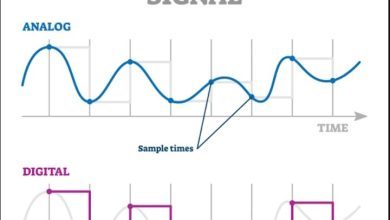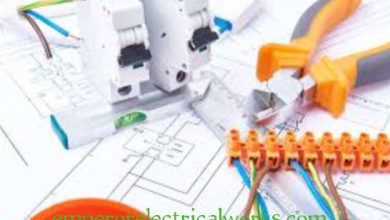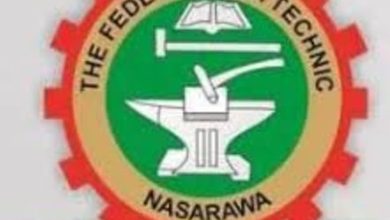INDUSTRIAL SOCIOLOGY [objectives answers]. The correct answer will be italicized and bold
- Feature of industrialization includes (a) changes in the societal structure (b) examination of industry (cx) industrialization process (d) none of the above
- The diagrammatical representation of administration is called (a) administration (b) administration drawings (c) administration gap (d) organization chart or administration chart
- Propounded administrative theory of management (a) Hersbery (b)Douglas Mcgregor (c) Henry fayol (d) none of the above
- Management theory favor informal group as a stimulating and a sustaining productive interest of workers. (a) scientific (b) human relation (c) Governing (d) principles
- The principle behind the maintenance of security of job in an organization is called professional qualification
- MANAGEMENT is defined as an act of getting things done through people.
- The arrangement of plan in order of preference is called organizing
- The process of energizing or boosting the morale of workers is called motivation
- Is the founder of bureaucracy approach of management (a) karl marx (b) herbert spencer (c) fedrick tonnie (d) max weber
- One of the advantages of bureaucracy include (a) payment of salary (b) office work (c) specialization (d) none of the above
- The branches of sociology include the following except (a) demography (b) rural and urban (c) industrial (d) productive
- Management functions include the following except (a) authoritative function (b) democratic function (c)planning (d) welfare function
Use the following information to answer question 13-15
A.Physiological need
B. Social need
C. Theory x
D. Theory Y - THEORY X describes the category of people who like close supervision.
- Physiological needs can also be regarded as basic need.
- The human need for belongingness is also called social need
SECTION B - Structure of management are Top management, middle management and lower management
- Scientific management was propounded by Fredrick winslow taylor while human relation is tagged as Elton mayor work
- The main beauty of human relation school is that human is placed above money and workers welfare above productivity.
- Organization can be classified into formal and informal organization
- Negative implications of informal organizations are
A.It creates rumors
B. It resist change
C. People are under pressure to observe group norms - THE ORGANISATION STRUCTURE: refer to the systematic arrangement of firm’s path into a working whole, within each industrial environment or organization.
- FORMAL ORGANISATION: is defined as a system of consciously coordinated activities of two or more persons, that entails the way in which organization divides it labor position, it units and the means of implementation used to link technology.
DISAVANTAGES OF BUREAUCRACY
- Bureaucracy does not adequately allow for personal growth i.e it does not allow for individual initiative.
- It develops conformity and group thinking i.e it does not allow individuals, to think on their own ( everybody must agree before a decision is taken)
- It does not provide adequate means of settling issues between members. Most especially between fractional groups, this is because of the different hierarchy in the organization e.g NASU believed that ASUU are always more favored
- Communicative and innovative ideas are frustrated or distorted due to hierarchical structure.
- It is time consuming and does not need emergency period
INDUSTRIAL SOCIOLOGY [objectives and theory answers] 2018/2019 - The two major authors in the industry are management (employees) and staff(employees)
- The type of strike that takes a spontaneous form is wild cat strike
- According to maslow, the need which stands as the highest human need is self actualization need
- In motivation, when incentive is pulled from within it is called Drive (a) intrinsic (b) extrinsic (c) drive (d) goal
- What is bureaucracy? Bureaucracy is as a management approach that emphasizes a structured organization in which position and authority are defined according to formal rules.
- Mention two advantages of bureaucracy.
A. Specialization: Bureaucracy allows one expert to specialize in those areas where there is an expert. This makes it possible to increase in productivity.
B. Structure: It provides form to an organization by structuring it, in which the duties of each position are described.
C. Predictability and stability: The rules, regulation, structure, professional aspect and other elements of bureaucracy enable it to provide predictability, stability, certainty and order to an organization.
D. Rationality: Judgement are made according to objective and generally agreed upon criteria, not by whim caprices or patronage.
E. Democracy: it emphasize technical competence as the only sole basis for holding a job. Arbitrary bases have no effects. - The leadership style that is characterized by “we” is democratic (a) democratic (b) autocratic (c) leissez-faire (d) supportive
- Mention two characteristics of of democratic leadership styles.
A Creativity is encouraged and rewarded
B. Members of the group feel more engage in the process
C Group members are encouraged to share ideas and opinions, even though the leader retains the final say over each concluded conversation. - Mention two ways in which strike manifest itself in an organization.
A. Absenteeism
B. High rate of turnover i.e (worker going and coming)
C Inefficiency
D. Restriction of output
E. Arbitrary discipline - Mention two principle of scientific management.
ANSWER
It is also known as the Taylor’s principle
A. The application of science to the work process in place of hitherto existing unscientific technique.
B. The scientific selection and progression development of the workmen. In other words, management should develop objectives means of selecting the best man or to the job and to ensure that he receives adequate training.
C In bringing together of science and scientifically selected and trained workmen by management.
D. Finally the relationship between management and the workforce should be harmonious and conflict free. - Mention two causes of industrial conflicts
A. The communicative sources: This refers to those disputes braising from semantic (language) difficulties, misunderstanding and noise in communication channels i.e anything that disrupt communication.
B. The structural sources: There are a number of structural variables which have been identified as source of conflict in organization e.g increase in size, specialization such as NASU and ASUU
C. Personal/behavioral source: This sources emphasizes the human aspect of organization, a great deal of existing literature indicates that certain personality attributes, including high authoritarianism, high dogmatism meaning and low self esteem are a major source of conflict - Mention two[2] qualities of a good leader
A. They provide direction
B. All leader have influence
C. Hey help in achievement of group goals - Who is a leader? Is someone who follows, supports a leader and pledges his allegiance to the leader
- The leadership style in which all decisions are taken by a single person is called autocratic leadership style
- The total abandonment of work in an organization is called Strike
- Mention two components of strike
ANSWER
A. Intrinsic or internal motivation: it effect on the individual is internal. Examples of intrinsic motivation include prestige, achievements, dignity, recognition, the nature of the work itself, responsibility, sense of belongingness, pride, satisfaction, superiority, e.t.c
B. Extrinsic or external motivation: it effects on the individual arises from influence outside the individual. Examples include large pay or salaries, good conditions of services and incentives, provisions, bonuses, e.t.c - What is management? Is the science and act of management as the organization and control of human activities toward a specific end. It is the act of getting people together to accomplished a desired goals and objectives using available resources efficiently and effectively.
- The type of strike that is a display of solidarity from one sister body to another is sympathetic strike
- The discipline that applies to sociological theories and principle to the workplace is Industrial sociology
- The motivation hierarchy of needs was propounded by Abraham maslow(1908-1970)
- MOTIVATION : Is a driving force responsible for initiation, persistence and goal directed behavior.
- What is authority? Can be defined as the legitimate power which one person or group posses and one another practice
- The man who identified the three types of authority on their loyalty was . (a) karl marx (b) max weber (c) Emile Durkhiem (d) Francis Gaulon
SECTION II
ANSWER ANY TWO QUESTION - ”Abraham maslow’s Hierarchy of needs theory was not without faults”. Expatiate.
ANSWER
Abraham maslow’s Hierarchy of needs theory was not without faults because of the following reasons stated below.
A. It is only when a person succeed in satisfying his lower level needs that he can seek or act upon his higher needs. Failure to satisfy the lower needs, will leads to failure to seek on higher needs.
B. That the percentage of deficiency needs is high, and that of growth needs low implies that managers should focus attention on strategies to correct this deficiencies will have a higher chance of succeeding than directing attention to the already satisfactory fulfilled lower-order needs. Comfort, social success, job security, sense of belonging and intimate relationship can lead to a better understanding and knowledge of motivation. An unsatisfied need is a source of frustration, conflict and stress. This is a potential damage to managers. - ADVANTAGES OF BUREAUCRACY
A. It is well organized and structured
B. It provides rooms for individual to build a career
C. All it rules and principle are clearly stated for everyone to follow


